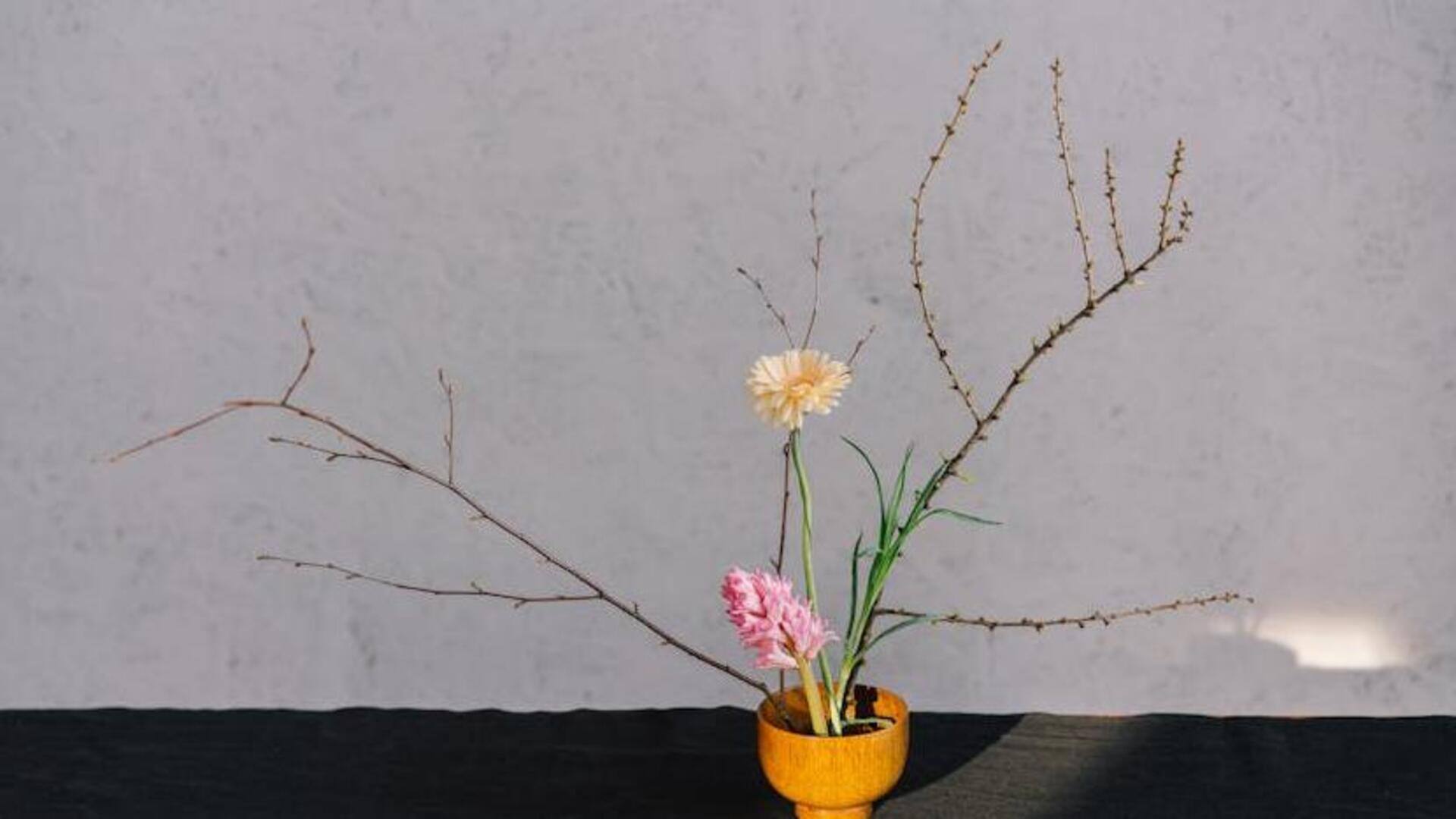
An introduction to ikebana, the Japanese art of flower design
What's the story
Ikebana, the traditional Japanese art of flower arrangement, is a world of harmony, balance, and simplicity. Unlike Western floral arrangements that focus on volume and color, ikebana celebrates the beauty of each individual flower and its relationship with the surrounding space. This ancient practice goes beyond arranging flowers to create a bridge between nature and humanity. It fosters mindfulness and cultivates an appreciation for the beauty of nature in our everyday lives.
Origins
Historical roots of Ikebana
The art of ikebana began in the sixth century with the introduction of Buddhism to Japan. Originally used as temple offerings, it eventually transformed into a sophisticated art form. Early styles were simplistic, but complexity increased over time. By the 15th century, ikebana had become a cornerstone of Japanese culture, with numerous schools emerging to cultivate distinct styles.
Fundamentals
Principles guiding Ikebana arrangements
The key concepts of ikebana revolve around balance, harmony, and minimalism. Arrangements typically adhere to a triangular form symbolizing heaven, earth, and humanity. Every element is meticulously selected based on its shape, line, and color to contribute to a harmonious composition. The employment of negative space is essential in emphasizing the beauty of individual components while preserving simplicity.
Essentials
Tools used in creating arrangements
Crafting an ikebana arrangement necessitates particular tools, including a kenzan (spiked holder), hasami (flower scissors), and containers that harmonize with the design's aesthetic. Kenzan: This spiked holder secures stems while permitting the freedom to position them at different angles for the desired effect. Hasami: These specialized flower scissors are crucial for precise cutting without harming delicate stems or leaves.
Variations
Popular styles within Ikebana schools
Multiple schools exist within ikebana, each offering a unique style. These range from traditional to contemporary interpretations. For example, ikenobo focuses on a classical approach, while sogetsu emphasizes modern designs. The latter allows for greater creative freedom, incorporating unconventional materials alongside flowers. Think branches or even stones! This enhances artistic expression, fostering innovation and personal taste. No wonder, Sogetsu is the most popular among practitioners worldwide today!